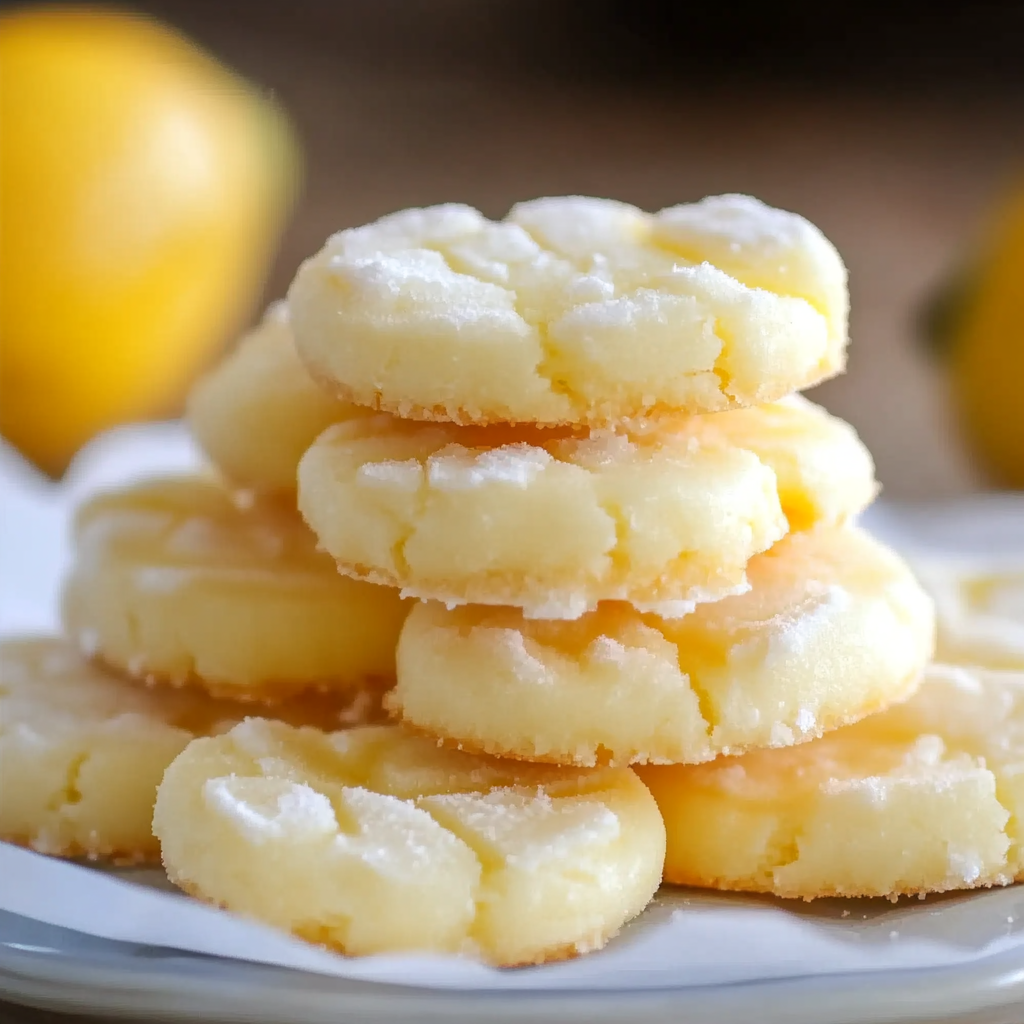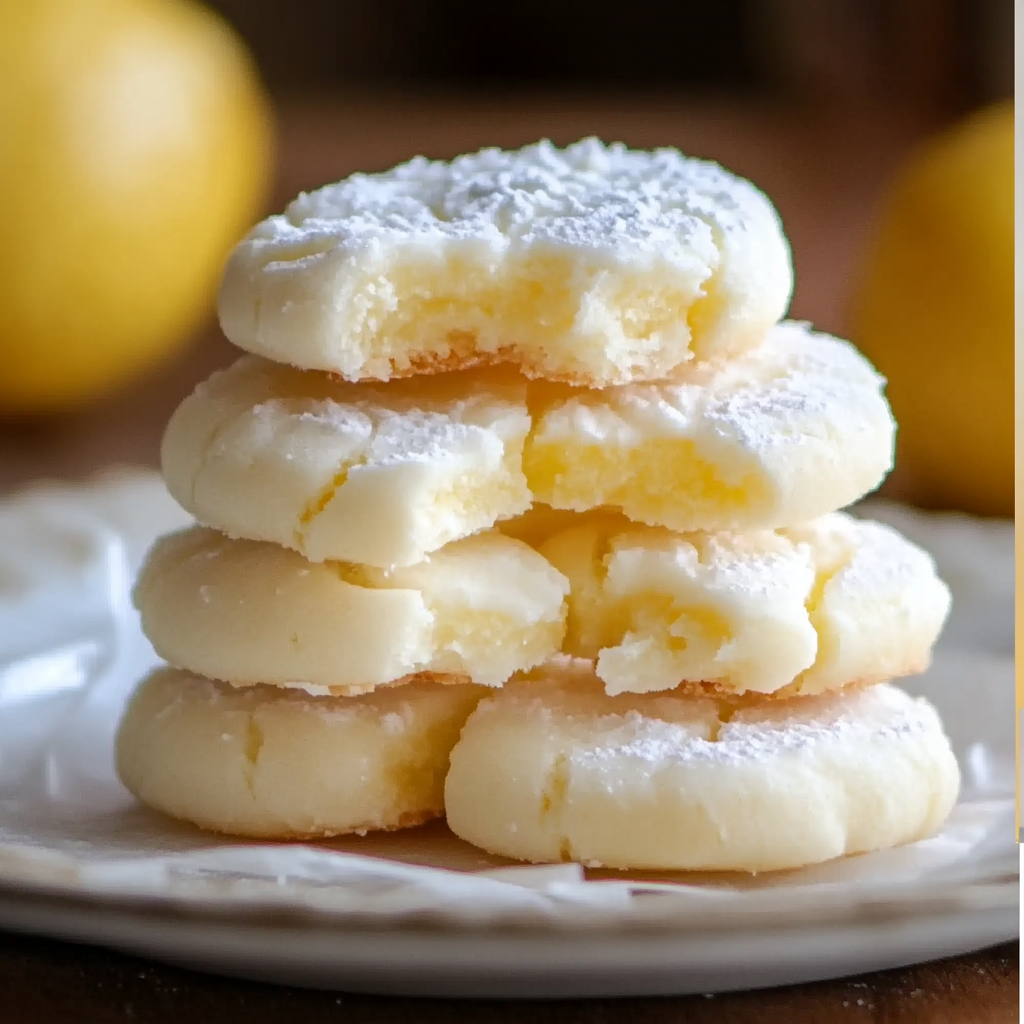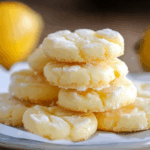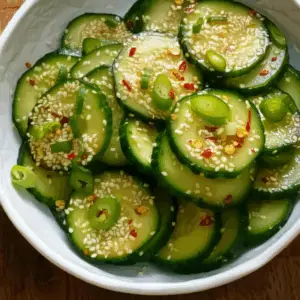What Are Meltaway Cookies?
Meltaway cookies are a type of delicate, soft cookie that “melts” in your mouth as you take a bite. They have a signature light, tender texture, often due to the inclusion of cornstarch and butter, which create a smooth and soft dough. The name “meltaway” perfectly describes the experience, as they practically dissolve upon contact with your tongue. The flavor profile tends to be subtle yet rich, often enhanced by a variety of extracts or zests.
Unlike other cookies that require creaming butter and sugar until fluffy or requiring multiple steps, meltaway cookies are simple to prepare, making them a favorite for both beginner and seasoned bakers alike. They can be easily customized with various flavors, from vanilla to chocolate, but one of the most popular versions is the refreshing lemon meltaway.
If you’re interested in exploring more about cookie types, you can check out this article on Wikipedia: Cookie for an overview of cookie variations.
Why Lemon Meltaways Are Special
Lemon meltaway cookies offer a refreshing twist on the classic meltaway cookie recipe, giving it a citrusy kick. The tangy flavor of fresh lemon juice and lemon zest brightens up the buttery sweetness of the cookie dough, creating a balanced and refreshing taste. The lemon zest, which is the outer peel of the lemon, adds an aromatic citrus fragrance that infuses the cookies with a lively, zesty character. It’s no wonder that lemon is a favorite flavor in baking—its brightness complements the richness of butter and sugar, making it an ideal pairing for meltaway cookies.
Lemon meltaways are perfect for those who enjoy desserts that aren’t overly sweet but still offer plenty of flavor. The glaze made with lemon juice and powdered sugar not only adds a touch of sweetness but also enhances the citrusy notes, making each bite an absolute treat. This flavor combination is one that brings both freshness and comfort, making them a perfect option for any occasion, from a simple afternoon snack to a special gathering.
For further reading on how lemons play a role in cooking and baking, you can visit this informative page on Wikipedia: Lemon.
The Ingredients
Dry Ingredients
The dry ingredients in a meltaway cookie recipe are essential for creating the delicate texture that these cookies are known for. The first ingredient is all-purpose flour, which forms the base of the dough. While you can use different types of flour in baking, all-purpose flour provides the right balance of structure and softness for meltaway cookies. It ensures the dough holds together while still allowing for the crumbly texture that makes these cookies so special. If you’re looking for more details on flour types and their uses, check out this Wikipedia article on all-purpose flour.
The second dry ingredient in the recipe is cornstarch. This might seem unusual to those new to baking, but it plays a crucial role in achieving the meltaway texture. Cornstarch works by weakening the gluten in the flour, which results in a softer, more tender dough. Without cornstarch, the cookies may not have that signature “melt in your mouth” feel that makes them so irresistible. If you’re curious about other ways to use cornstarch in baking, refer to this Wikipedia page on cornstarch.
Baking powder is also included in the dry ingredients. While it’s not the star of the show, it provides a slight leavening effect, ensuring that the cookies rise just a little while baking, giving them their soft texture. Finally, a small amount of salt is added to balance the sweetness and bring out the flavors of the other ingredients.
Wet Ingredients
The wet ingredients in lemon meltaway cookies are where the flavor really comes to life. The most important of these is unsalted butter. It’s critical to use unsalted butter because it gives you full control over the amount of salt in the recipe. Softened butter is also key to achieving a smooth, uniform dough. When creaming the butter with the sugars, it helps create air pockets in the dough, making the cookies light and airy once baked. Butter is also responsible for the rich flavor of the cookies, so don’t skip this ingredient!
Two types of sugar are used in the dough: powdered sugar and granulated sugar. Powdered sugar, also known as confectioners’ sugar, helps to create a smoother dough and contributes to
A network error occurred. Please check your connection and try again. If this issue persists please contact us through our help center at help.openai.com.
Step-by-Step Instructions for Lemon Meltaways
Preheating the Oven and Preparing the Baking Sheet
Before diving into the dough preparation, it’s crucial to preheat your oven to 350°F (175°C). Preheating the oven ensures that your cookies bake evenly from the moment they hit the sheet. Once the oven is preheated, line a baking sheet with parchment paper. This step serves a dual purpose: it prevents the cookies from sticking to the pan and helps them bake evenly. If you’re looking for more information about the benefits of using parchment paper in baking, visit Wikipedia: Parchment Paper.
Making the Dough
Now it’s time to mix the ingredients! Start by whisking the dry ingredients—the all-purpose flour, cornstarch, baking powder, and salt—in a medium-sized bowl. This ensures the dry ingredients are evenly distributed throughout the dough, which prevents clumping when added to the wet ingredients.
Next, in a separate large bowl, cream together the softened butter, powdered sugar, granulated sugar, lemon zest, lemon juice, and vanilla extract. You can use an electric mixer for this step or a stand mixer if you prefer. Creaming the butter with the sugars incorporates air into the mixture, which will help the cookies become light and tender. The lemon zest adds a burst of citrusy fragrance to the dough, and the lemon juice imparts the tangy, refreshing flavor that gives these cookies their signature taste. For a closer look at how to handle vanilla extract in baking, check out this Wikipedia article on vanilla extract.
Once the wet ingredients are well combined and fluffy, gradually add the dry ingredients to the wet ingredients. Mix them together gently until the dough comes together. Don’t overmix—this can result in a denser texture, and we want to preserve the delicate meltaway texture. If the dough seems too soft or sticky, you can chill it in the refrigerator for about 15 minutes to firm it up before shaping.
Shaping and Baking the Cookies
To shape the cookies, scoop tablespoon-sized portions of dough and roll them into balls. Place the dough balls on the prepared baking sheet, spacing them about 2 inches apart. This spacing ensures that the cookies have room to spread while baking without merging together. You can use a fork or your fingers to gently press each dough ball down to flatten it slightly. This step is crucial to achieving the perfect, slightly flattened cookie shape that helps them bake evenly.
Now, place the baking sheet in the preheated oven and bake the cookies for about 10-12 minutes. Keep a close eye on them during the last few minutes—you’re looking for the edges to be lightly golden, but the centers should still remain soft. Don’t overbake them, or you might lose the meltaway texture. For more information about how baking times vary based on cookie size and your oven, check out the Wikipedia article on baking.
Once done, remove the cookies from the oven and allow them to cool on the baking sheet for about 5 minutes. This helps them firm up just enough to prevent them from falling apart when transferring them to a cooling rack.
Preparing the Lemon Glaze
While the cookies are cooling, it’s time to make the glaze. In a small bowl, whisk together the powdered sugar and lemon juice until smooth. The glaze should have a slightly runny consistency but still be thick enough to drizzle over the cookies. If you prefer a thicker glaze, you can add a little more powdered sugar until you reach the desired consistency. For a different variation, you could use lemon zest in the glaze for an extra burst of flavor.
Once the cookies have cooled completely on the cooling rack, drizzle the glaze over the tops of each cookie. You can use a spoon or a small piping bag to control the drizzle. The glaze will set as it sits on the cookies, adding a sweet and tangy finish that perfectly complements the buttery lemon flavor.
After the glaze has set, your lemon meltaway cookies are ready to be enjoyed! They’re the perfect balance of sweet and tangy with that signature melt-in-your-mouth texture. Whether you’re serving them at a family gathering or enjoying them as an afternoon treat, these cookies are sure to impress.
For more ideas on how to enhance your cookie recipes with glazes and finishes, check out the Pinterest board on cookie decorating.
Tips and Tricks for Perfect Meltaway Cookies
Adjusting for Altitude and Humidity
Baking can be tricky depending on where you live, especially if you’re at a higher altitude or in a very humid climate. If you’re baking at a high altitude, such as above 3,000 feet, you may need to make slight adjustments to the recipe. At higher altitudes, the air is thinner, which can affect the rise and texture of your cookies. To prevent them from spreading too much or becoming too flat, you may want to reduce the amount of lemon juice slightly and increase the flour by 1 to 2 tablespoons. This adjustment helps ensure the dough maintains enough structure.
In humid climates, the added moisture in the air can make your dough a bit stickier and affect the final texture. If you’re in a humid area, you might need to add a little extra cornstarch to help balance the moisture in the dough. You can also refrigerate the dough before baking, which will help firm it up and prevent excessive spreading. For more details on altitude adjustments in baking, check out this Wikipedia article on baking.
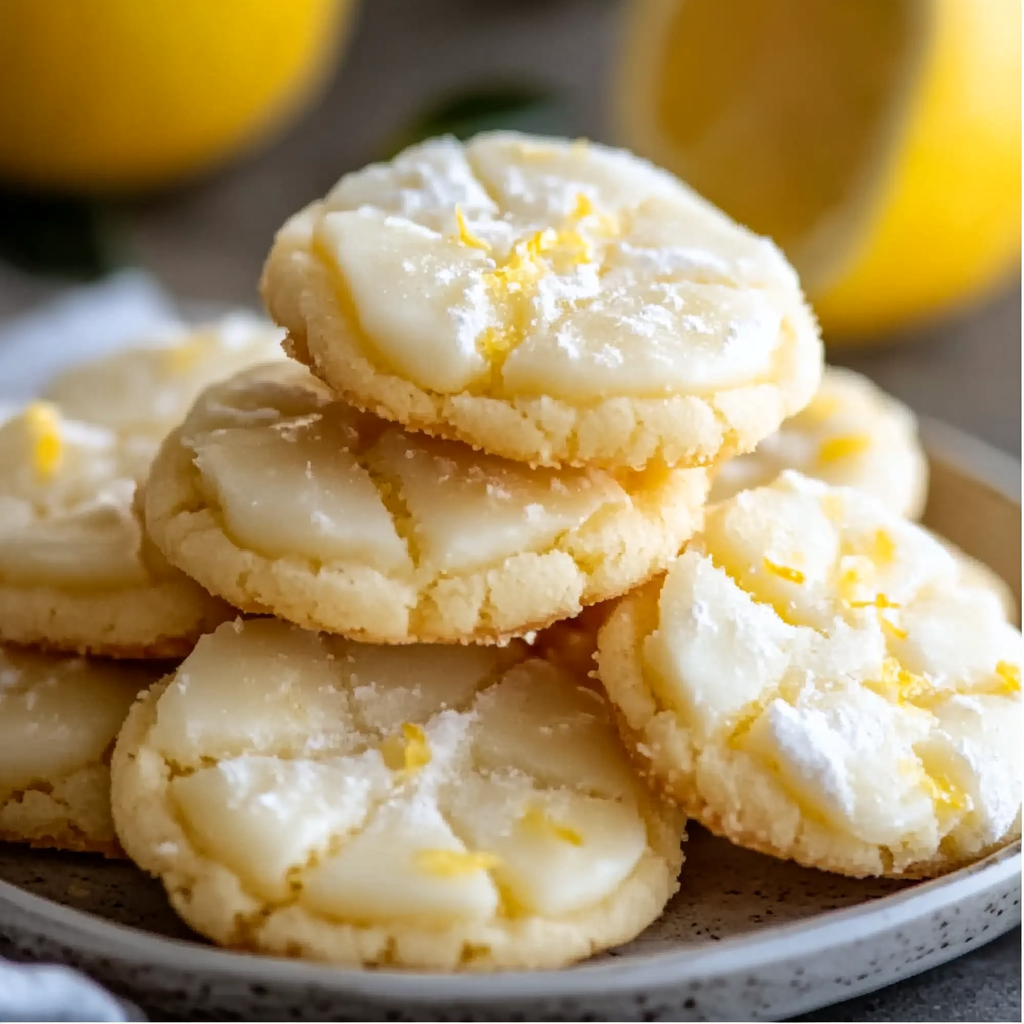
Using Fresh Lemon vs. Bottled Lemon Juice
When making lemon meltaway cookies, using fresh lemon juice and lemon zest will elevate the flavor of your cookies. Fresh lemon juice has a vibrant, bright acidity, while bottled lemon juice often contains preservatives that can affect the flavor. Similarly, lemon zest from a fresh lemon provides essential oils that infuse the dough with a natural citrus fragrance that bottled juice simply can’t replicate. If you don’t have fresh lemons on hand, consider using a combination of lemon zest extract and fresh juice for a comparable result. For more information on the benefits of fresh vs. bottled lemon juice, refer to this Wikipedia page on lemon juice.
Making Ahead and Storage Tips
One of the best things about meltaway cookies is how easy they are to prepare in advance. If you want to make the dough ahead of time, simply refrigerate it for up to 24 hours. Chilling the dough helps the flavors meld together and allows for easier handling. Alternatively, you can scoop and shape the dough into balls, then freeze them for up to three months. When you’re ready to bake, just place the frozen dough on a baking sheet and add an extra minute or two to the baking time.
Once baked, store the cookies in an airtight container to keep them fresh. They’ll stay soft and delicious for up to one week at room temperature. If you want to keep them even longer, consider freezing them in a single layer and then storing them in a freezer-safe container. To learn more about cookie storage techniques, check out this Pinterest board on cookie storage tips.
Customizing the Flavor
While lemon is the star of this recipe, there are several ways you can customize the flavor to suit your personal taste or the occasion. For example, you can easily turn these meltaways into orange meltaway cookies by swapping the lemon zest and juice for fresh orange zest and juice. The subtle citrus notes of orange still provide that refreshing kick but with a different twist.
Another option is to experiment with herbal flavors. A few finely chopped fresh mint leaves or a dash of lavender extract can provide a unique floral note that pairs beautifully with the light texture of meltaway cookies. For a richer version, you could add small amounts of finely chopped chocolate or nuts to the dough, which will give the cookies a heartier texture and a bit of crunch. The possibilities are endless, so don’t hesitate to get creative with the flavors! If you’re looking for inspiration on flavor variations, check out this Pinterest board on cookie flavor variations.
Serving Suggestions and Variations
How to Serve Lemon Meltaway Cookies
Lemon meltaway cookies are perfect for almost any occasion, thanks to their versatile flavor and delicate texture. Here are a few ideas for serving these delightful treats:
-
Pair with a Hot Beverage: The citrusy zest and buttery texture of the cookies make them an excellent pairing with hot beverages like tea, coffee, or even hot chocolate. The bright lemon flavor complements both sweet and savory drinks, making them ideal for afternoon tea or breakfast.
-
Great for Gifting: The simplicity and elegance of these cookies make them a wonderful option for gift-giving. You can package them in a decorative tin or a cute gift box with some parchment paper. Lemon meltaways are especially perfect for holidays like Christmas or Mother’s Day, as their bright flavor can brighten anyone’s day.
-
Serve at Parties or Gatherings: Whether it’s a small family gathering or a more elaborate event, these cookies are sure to impress. You can serve them as a light dessert option or offer them alongside other baked goods. Their lightness means they won’t feel overwhelming after a heavy meal, and they’re sure to be a crowd favorite.
For more ideas on how to pair cookies with drinks or serve them at gatherings, check out this Pinterest board on serving cookies.
Flavor Variations
While lemon meltaway cookies are delightful on their own, there are plenty of ways to get creative with flavors. Here are a few variations that you can try:
-
Orange Meltaways: Swap the lemon zest and juice for fresh orange zest and juice. The result is a similar light and airy texture, but with the refreshing, sweet-tart flavor of oranges. This is an excellent variation, especially if you love citrus but want something a bit different from lemon.
-
Lavender Lemon Meltaways: For a more floral twist, add dried lavender buds to the dough along with the lemon zest. Lavender has a calming fragrance that pairs wonderfully with the bright flavor of lemon. Be careful not to overdo it—just a teaspoon or so will provide enough flavor.
-
Chocolate Chip Lemon Meltaways: For those who can’t resist chocolate, consider adding a small handful of mini chocolate chips to the dough. The combination of smooth lemon and rich chocolate provides an interesting contrast in flavor, adding sweetness and richness to the meltaway texture.
-
Lemon Poppy Seed Meltaways: To give your cookies a bit of texture, consider adding poppy seeds to the dough. These tiny seeds add a slight crunch and a nutty flavor, making them an ideal companion to the citrusy zing of lemon.
Decorating Ideas
Adding a bit of decoration can elevate these meltaway cookies, making them even more delightful to look at and eat:
-
Glitter or Sparkles: After drizzling the glaze, you can sprinkle edible glitter or sparkles on top of the cookies for a festive touch. This is particularly fun for holiday celebrations or parties.
-
Colored Sugar: Another simple but beautiful decoration is colored sugar. You can sprinkle a little bit of colored sugar on the glaze before it sets, giving the cookies a festive, colorful look that’s sure to catch the eye.
-
Lemon Zest Garnish: A little twist of fresh lemon zest on top of each cookie before serving gives them a fresh and aromatic look that ties back to their bright flavor.
If you’re interested in seeing other decorating ideas for cookies, check out this Pinterest board on cookie decoration.
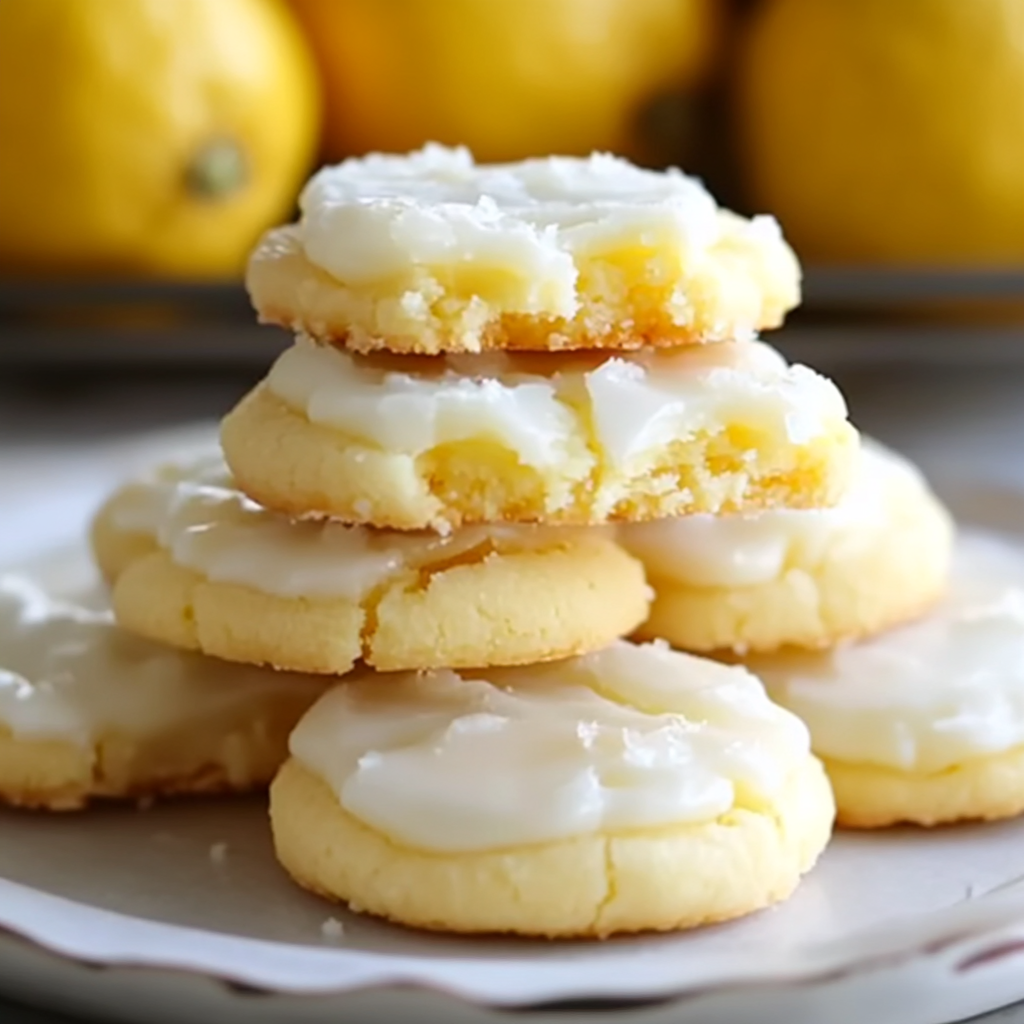
FAQs
What are the best substitutes for cornstarch in meltaway cookies?
If you don’t have cornstarch, you can use other starches as substitutes. Potato starch and arrowroot powder are excellent alternatives. Both will help create the soft, melt-in-your-mouth texture typical of meltaway cookies. The key is to use the same amount as the cornstarch called for in the recipe.
Can I make the dough ahead of time and freeze it?
Yes! You can definitely make the dough ahead of time and freeze it. Once the dough is prepared, scoop it into tablespoon-sized balls and place them on a baking sheet. Freeze the dough balls for about 1 hour before transferring them into a freezer-safe bag or container. When you’re ready to bake, just place the frozen dough balls on a baking sheet and bake them for an additional 1-2 minutes. There’s no need to thaw them first.
Why are meltaway cookies so soft?
Meltaway cookies are soft because of the cornstarch and butter in the recipe. The cornstarch reduces the development of gluten, which results in a more tender dough. Meanwhile, the butter provides richness and moisture, which contributes to their soft, melt-in-your-mouth texture.
Can I use margarine instead of butter for these cookies?
While you can use margarine in place of butter, it will affect the texture and flavor of the cookies. Margarine tends to have more water content than butter, which could result in a slightly different texture. For the best flavor and texture, it’s recommended to use unsalted butter.
What is the best way to store meltaway cookies?
To store your meltaway cookies, place them in an airtight container at room temperature. They will stay fresh for up to one week. If you want to keep them longer, you can freeze them. Place the cookies in a freezer-safe bag or container and freeze for up to 3 months. When you’re ready to eat them, simply thaw them at room temperature.
PrintMeltaway Cookies Recipe: Buttery and Full of Lemon Flavor
These Lemon Meltaway Cookies are the perfect balance of buttery richness and bright, tangy citrus flavor. With a soft, crumbly texture that practically melts in your mouth, these cookies are ideal for lemon lovers. The addition of a simple lemon glaze adds a sweet, tart finish that enhances the overall flavor. Whether you’re baking for a special occasion, sharing with friends, or enjoying them with a cup of tea, these meltaway cookies will become a favorite in your recipe collection.
- Author: Clara
Ingredients
For the cookies:
- 1 ¾ cups all-purpose flour
- ⅓ cup cornstarch
- ½ tsp baking powder
- ¼ tsp salt
- ½ cup unsalted butter, softened
- ⅓ cup powdered sugar
- 2 tbsp granulated sugar
- 1 tbsp lemon zest (from about 1 lemon)
- 2 tbsp fresh lemon juice
- 1 tsp vanilla extract
For the glaze:
- ½ cup powdered sugar
- 1 tbsp fresh lemon juice
Instructions
Preheat your oven to 350°F (175°C). Line a baking sheet with parchment paper.
In a medium bowl, whisk together the flour, cornstarch, baking powder, and salt.
In a separate large bowl, cream together the softened butter, powdered sugar, granulated sugar, lemon zest, lemon juice, and vanilla extract until light and fluffy.
Gradually add the dry ingredients to the wet ingredients, mixing until the dough comes together.
Scoop tablespoon-sized portions of dough and roll them into balls. Place them on the prepared baking sheet, spacing them about 2 inches apart.
Gently press each dough ball down with a fork or your fingers to flatten slightly.
Bake for 10-12 minutes, or until the edges are lightly golden but the centers are still soft.
While the cookies are cooling, prepare the glaze by whisking together powdered sugar and lemon juice until smooth.
Once the cookies have cooled completely, drizzle the glaze over the tops.
Serve and enjoy!
Notes
-
Chill the Dough: If the dough feels too soft to handle, refrigerate it for 15-20 minutes before shaping into balls. This will make it easier to work with and help prevent the cookies from spreading too much during baking.
-
Customize the Flavor: While lemon is the classic flavor in this recipe, don’t hesitate to experiment with other citrus fruits like oranges or limes, or even add a few chocolate chips for a twist.
-
Make-Ahead: You can freeze the dough or the baked cookies for later enjoyment. The dough can be frozen for up to 3 months, while the cookies will stay fresh for up to a week at room temperature.
